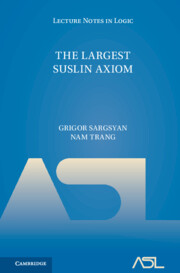Book contents
- Frontmatter
- Dedication
- Contents
- Chapter 1 Introduction
- Chapter 2 Hybrid 𝒥-structures
- Chapter 3 Short tree strategy mice
- Chapter 4 A comparison theory of HOD mice
- Chapter 5 HOD mice revisited
- Chapter 6 The internal theory of LSA HOD mice
- Chapter 7 Analysis of HOD
- Chapter 8 Models of LSA as derived models
- Chapter 9 Condensing sets
- Chapter 10 Applications
- Chapter 11 A proof of square in LSA-small HOD mice
- Chapter 12 LSA from PFA
- References
- Index
Chapter 6 - The internal theory of LSA HOD mice
Published online by Cambridge University Press: 07 June 2024
- Frontmatter
- Dedication
- Contents
- Chapter 1 Introduction
- Chapter 2 Hybrid 𝒥-structures
- Chapter 3 Short tree strategy mice
- Chapter 4 A comparison theory of HOD mice
- Chapter 5 HOD mice revisited
- Chapter 6 The internal theory of LSA HOD mice
- Chapter 7 Analysis of HOD
- Chapter 8 Models of LSA as derived models
- Chapter 9 Condensing sets
- Chapter 10 Applications
- Chapter 11 A proof of square in LSA-small HOD mice
- Chapter 12 LSA from PFA
- References
- Index
Summary
This chapter studies internal theory of lsa hod mice. Suppose $(\mathcal{P},\Sigma)$ is a hod pair of an sts hod pair, $X$ is a self-wellordered set such that $\mathcal{P}\in X$, and $\mathcal{N}$ is a $\Sigma$ or $\Sigma$-sts mouse over $X$. The main theorem of this chapter shows that N is $\Sigma$-closed and has fullness preserving iteration strategy, then $\Sigma \restriction \mathcal{N}[g]$ is definable in $\mathcal{N}[g]$ for any generic $g$ over $\mathcal{N}$ . The main idea behind the proof is that the branch of an iteration tree $\mathcal{T}$ on $\mathcal{P}$ can be identified by the authentication process introduced in Chapter 3.
Keywords
- Type
- Chapter
- Information
- The Largest Suslin Axiom , pp. 193 - 206Publisher: Cambridge University PressPrint publication year: 2024

